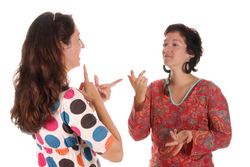A glimpse into more unique features of sign language
The project ON THE OTHER HAND (On the other hand: The linguistic impact of having two symmetrical articulators in sign language) employed innovative methods in a study of Sign Language of the Netherlands (Nederlandse Gebarentaal, or NGT). The team focused on three questions targeting discourse, syntax, and phonology in NGT, one of the earliest and largest digital sign language corpora in the world. First, what kind of information does a second hand contribute to signed communication in longer utterances (discourse)? Second, which types of utterances in which a second hand performs (subordination, coordination, parenthesis, apposition) can be distinguished in signed sentences? And, third, what constraints are there on one-handed articulation of two-handed signs (often necessary to create simultaneous constructions)? So-called classifier constructions are universal to sign languages and have unique properties that arise by virtue of the visual-gestural modality. Researchers found that two independent, very brief sentences are articulated at the same time in such constructions. That is, each hand expresses a predicate that may have different arguments. The non-dominant hand holds information for a while as the dominant hand signs. The team observed that these holds occur both within and across sentences, which suggests a manual rhythm that at times comprises units larger than a single sentence. Along with these findings, ON THE OTHER HAND found strong evidence that the dominant hand in a specific sign or sentence does not necessarily correspond to a signer's preferred hand. The study of 92 individuals in the NGT corpus showed that signers are apt to reverse the role of each hand. Although there may be no communicative reason for this dominance switch, for most people the majority of reversals typically functions to express contrast at some grammatical level. Project work yielded research publications as well as a large database of annotations and a related basic lexicon. The database and lexicon are already being employed for teaching and learning. ON THE OTHER HAND also produced a series of popular publications for deaf signers (in sign language) and hearing learners. These have helped communicate the existence of the data sets to a broad audience and pave the way for non-research exploitation.



